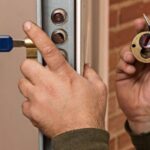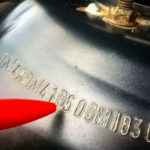Dry screed of Paul is a well -known way to build and repair premises, which is ready to serve more than its competitors in its calculations, and in costs is much more profitable than the same cement mixture. When screeding floors with this method, you can notice the fact that the work is not very laborious, everything is done in one breath without big difficulties. It is also worth noting that the decline in humidity in the rooms will be noticeable. This method is not only very reliable, but also demanding in those rooms where beams and floors are already outdated, and the floor on the floor has long lost their fitness. Advantages
Many other methods of screeding floors could not be made in winter and late autumn, since there was always a danger of spoiling the mixture. The ability to set a dry screed at all times of the year, regardless of climate and weather, makes this method the most convenient. “Plus” to all this, immediately after all installation you can freely move around the finished floor.
Negative sides
If your apartment is always wet or often tormented by neighbors from the “floods”, then it is better to refrain from a dry screed. She extremely does not like humidity, water and all that is connected with it. Its ideal distribution is a dry room. Therefore, before using this screed, check if you have high humidity in your apartment.
Dry screed the method is very good, but painstaking. Before starting work, it is worth carefully considering what material the coating will be made of, which the floors will be covered, and whether you need sound insulation or not. Each primer has its own qualities: some can create sound insulation in the apartment, but there is no.
Installation
1. Of course, you need to initially remove the old coating, and the entire floor as a whole (including old ceilings).
2. If the cracks, gross irregularities or just narrow gaps are noticeable, then you should pour them with a cement mixture.
3. Completely clean the site and free it from foreign objects. It should be perfectly clean.
4. To be extremely accurate, you need a device such as a water or laser level. Note the extreme height of the future sand, and the same will accurately determine the thickness will be convenient.
5. Spread one of the following types of coatings on the floor to protect the backfill of humidity – roofing material, parcham or other films that can resist the humidity reliably. Please note that you also need to fix this coating on the walls, most often no more than 20 cm.
6. Fall asleep the entire floor with a bed and it is perfectly aligned so that there are no tubercles and hills on it. This can be done using special polystyrene foam plates.
7. Now you will need to start laying the surface of the screed. It can be both gypsum fiber sheets, as well as plywood, chipboard. These materials are moisture resistant and inexpensive.
8. We grind all the seams that remained after our work, and after that we align these grouts. You can also be safe and put under the upper layer waterproofing fiber.
More details about the methods, advantages and disadvantages of the floor screed can be found on the Stiazhka page






